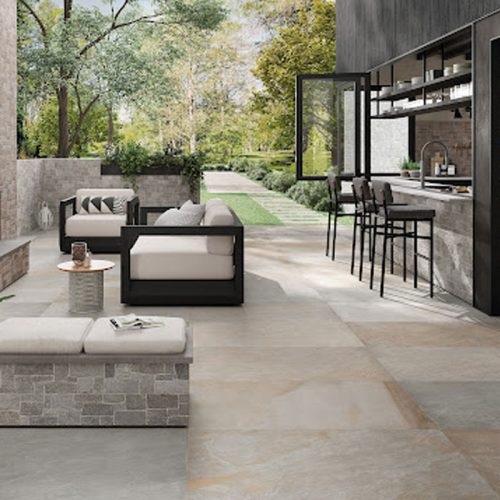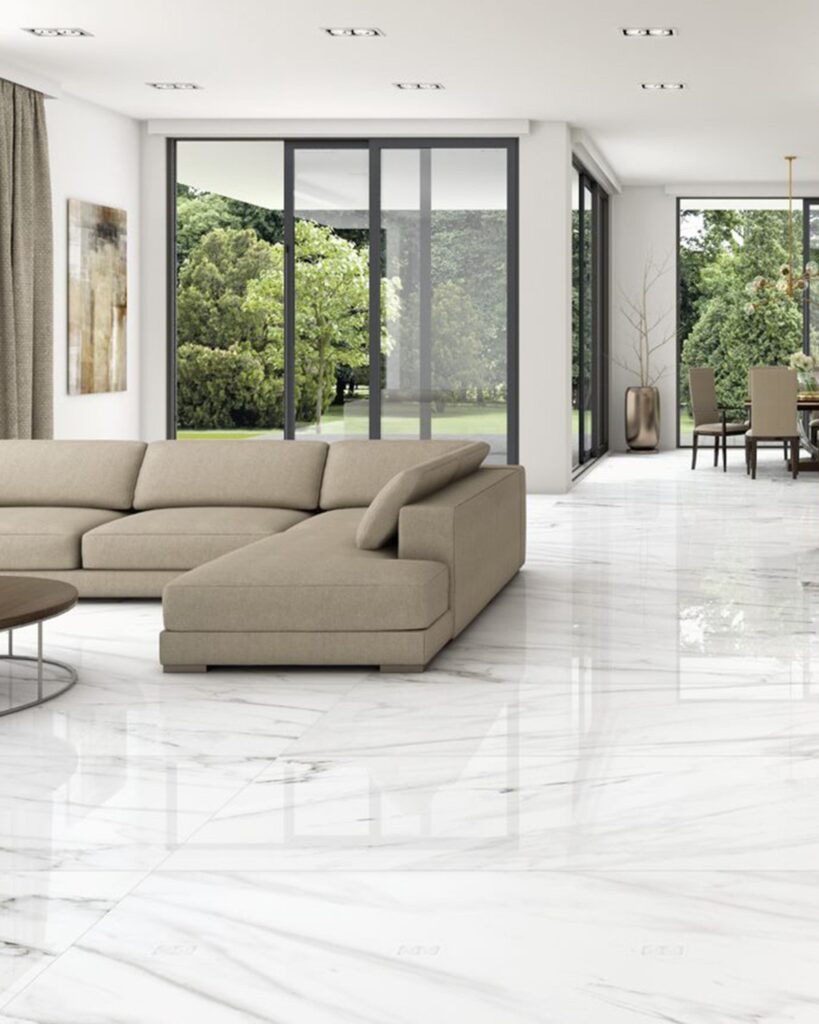

Tile defined as ceramic uses a coarser clay with a smaller ratio of fine kaolin clay, and it generally lacks some of the additives used in porcelain clay. Ceramic tile is fired at lower temperatures, generally no more than 1,650 degrees Fahrenheit. Ceramic tile can be slightly more prone to water infiltration than is porcelain tile, though these differences are fairly minimal if the ceramic tile is glazed.

Porcelain tile has a water absorption rate of 0.5 percent or lower as defined by the American Society for Testing and Materials (ASTM) section C373.To test this, the fired tile is first weighed, then it is boiled for five hours and left to sit in water for 24 hours. Then it is weighed again. If the tile weighs less than half of one-percent more as a result of water-absorbing into its surface, it is considered porcelain.
To achieve this density, a special kaolin clay mixture is used, which is finer and purer than most ceramic clay. It usually contains notable levels of quartz and feldspar mixed in. Porcelain tiles are fired at temperatures ranging from 2,200 to 2,500 degrees Fahrenheit. To the consumer, it generally suffices to say that porcelain is a dense, fine-grained, smooth tile that is more impervious to water than ordinary ceramic tile.